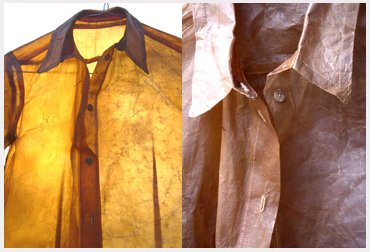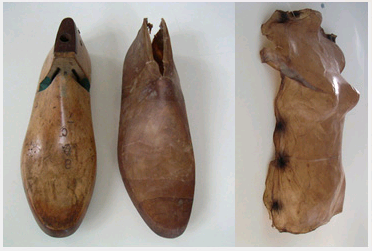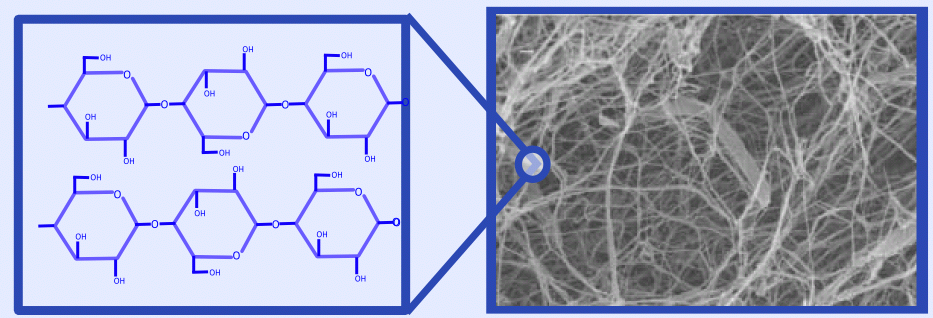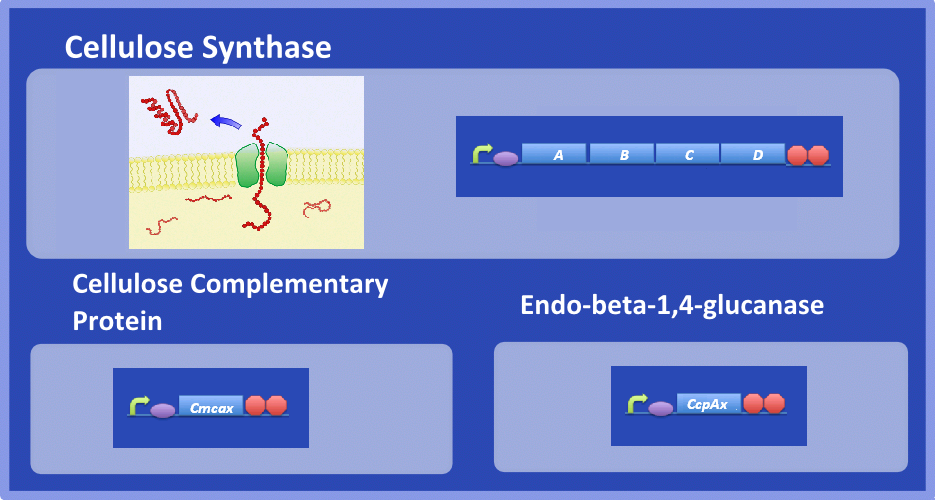Team:Imperial College/Cellulose
From 2008.igem.org
(Difference between revisions)
m (New page: {{Imperial/StartPage2}} <br> <br> {| cellpadding="1" style="background:#2B48B3; border:4px solid #E5EBFF; color:#E5EBFF" align="center" width=90% |colspan="2"|<font size=5px color=#E5EBFF>...) |
m (Spelling) |
||
| (7 intermediate revisions not shown) | |||
| Line 1: | Line 1: | ||
{{Imperial/StartPage2}} | {{Imperial/StartPage2}} | ||
<br> | <br> | ||
| - | + | === BioCouture === | |
{| cellpadding="1" style="background:#2B48B3; border:4px solid #E5EBFF; color:#E5EBFF" align="center" width=90% | {| cellpadding="1" style="background:#2B48B3; border:4px solid #E5EBFF; color:#E5EBFF" align="center" width=90% | ||
| - | |colspan="2"|<font size=5px color=#E5EBFF> | + | |colspan="2"|<font size=5px color=#E5EBFF>'''Biofabric'''</font><br> |
|- | |- | ||
| - | |style="vertical-align:middle;"|To explore the use of synthetic biology for biomaterial we collaborated with Suzanne Lee, a Senior Research Fellow at St Martins School of Art & Design. She has been focusing on the use of a particular biomaterial called bacterial cellulose for the production of clothes in her project BioCouture ( | + | |style="vertical-align:middle;"|To explore the use of synthetic biology for biomaterial we collaborated with Suzanne Lee, a Senior Research Fellow at St. Martins School of Art & Design. She has been focusing on the use of a particular biomaterial called bacterial cellulose for the production of clothes in her project BioCouture (for more information, you can visit the <html><a href="http://www.biocouture.co.uk" target="_blank">BioCouture homepage</a></html>). Drying the gel like bacterial cellulose produces a dry sheet that can be cut and manipulated to produce clothes ranging from jackets to shoes (see pictures below). From our discussions with Ms Lee it became apparent that there were a number of potential advantages for taking a synthetic biology approach to BioCouture. This page summarizes the use of bacterial cellulose and the potential advantages of a synthetic biology approach. <br> |
|- | |- | ||
|<center>[[Image:Biocouture.PNG |200px]][[Image:Biocouture2.PNG |200px]]</center> | |<center>[[Image:Biocouture.PNG |200px]][[Image:Biocouture2.PNG |200px]]</center> | ||
|} | |} | ||
| - | + | ||
| + | |||
{| cellpadding="1" style="background:#E5EBFF; border:4px solid #2B48B3; color:#2b48b3" align="center" width=90% | {| cellpadding="1" style="background:#E5EBFF; border:4px solid #2B48B3; color:#2b48b3" align="center" width=90% | ||
|colspan="2"|<font size=5px color=#2B48B3>Structure of Bacterial Cellulose</font> | |colspan="2"|<font size=5px color=#2B48B3>Structure of Bacterial Cellulose</font> | ||
| Line 18: | Line 19: | ||
|- | |- | ||
|[[Image:Cellulose structure picture.PNG|400px|center]] | |[[Image:Cellulose structure picture.PNG|400px|center]] | ||
| - | |} | + | |} |
| + | |||
{| cellpadding="1" style="background:#2B48B3; border:4px solid #E5EBFF; color:#E5EBFF" align="center" width=90% | {| cellpadding="1" style="background:#2B48B3; border:4px solid #E5EBFF; color:#E5EBFF" align="center" width=90% | ||
| Line 32: | Line 34: | ||
|colspan="2"|<font size=5px color=#e5ebff>The Potential of Synthetic Biology</font> | |colspan="2"|<font size=5px color=#e5ebff>The Potential of Synthetic Biology</font> | ||
|- | |- | ||
| - | |The potential of synthetic biology for biomaterials lies in controlling synthesis. For example, in our Biofabricator subtilis we use a light input to drive the synthesis of biomaterial and halt movement. Using the biofabricator subtilis would allow a greater control of the '''''Microscopic properties''''' (i.e the layout of fibers) and '''''Macroscopic properties''''' (i.e. the overall shape) of the BioCouture. Furthermore, changing the inputs into our biofabricator subtilis could allow more specific control. For example, shaping cellulose around a mold to produce seamless clothes is technically | + | |The potential of synthetic biology for biomaterials lies in controlling synthesis. For example, in our Biofabricator subtilis we use a light input to drive the synthesis of biomaterial and halt movement. Using the biofabricator subtilis would allow a greater control of the '''''Microscopic properties''''' (i.e the layout of fibers) and '''''Macroscopic properties''''' (i.e. the overall shape) of the BioCouture. Furthermore, changing the inputs into our biofabricator subtilis could allow more specific control. For example, shaping cellulose around a mold to produce seamless clothes is technically challenging. However, adaptation of the biofabrictor subtilis could allow binding and sensing of the mold to allow cellulose synthesis only when the bacteria is bound. |
|- | |- | ||
|[[Image:Blackbox cellulose.PNG|center|500px]] | |[[Image:Blackbox cellulose.PNG|center|500px]] | ||
|} | |} | ||
<br> | <br> | ||
| - | + | {{Imperial/EndPage|Summary|Dry_Lab}} | |
Latest revision as of 03:54, 27 July 2009
BioCouture
|
||||||||||||||||||||
 "
"





